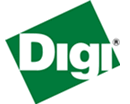
|
|
PDF NS9360 Data sheet ( Hoja de datos )
| Número de pieza | NS9360 | |
| Descripción | CMOS network-attached processor | |
| Fabricantes | Digi | |
| Logotipo |  |
|
Hay una vista previa y un enlace de descarga de NS9360 (archivo pdf) en la parte inferior de esta página. Total 30 Páginas | ||
|
No Preview Available !
NS9360 Datasheet
The Digi NS9360 is a single chip 0.13μm CMOS network-attached processor. The CPU is the
ARM926EJ-S core with MMU, DSP extensions, Jazelle Java accelerator, and 8 kB of instruction cache
and 4 kB of data cache in a Harvard architecture. The NS9360 runs up to 177 MHz, with a 88 MHz
system and memory bus and 44 MHz peripheral bus. The NS9360 operates at a 1.5V core and
3.3V I/O ring voltages.
With its extensive set of I/O
interfaces, Ethernet high-speed
performance and processing
NS9360
272 - pin BGA, lead-free, RoHS compliant
capacity, the NS9360 is the most
capable highly-integrated 32-bit
network-attached processor
available. The NS9360 is designed
specifically for use in high-
performance intelligent
networked devices and Internet
appliances including high-
performance/low-latency remote
I/O, intelligent networked
information displays, and
streaming and surveillance
cameras. The NS9360 is a member
of the award-winning NET+ARM
USB Host
USB Device
1284
Serial
Module
x4
UART
SPI
I2C
LCD Controller
8 x Timers/Counters
or 4 PWM
ARM
ARM926EJ-S
103 to 177 MHz
4K48kkBB
I-Cache
D-Cache
JTAG Test
and Debug
Real
Time
Clock
Distributed
DMA
10/100
Ethernet
MII/RMII
MAC
50 to 90 MHz AMBA AHB Bus
32b-D, 32b-A
Memory
Controller
CLK Generation
Vectored Interrupt
Controller
Power Manager
Ext.
Peripheral
Controller
AHB Arbiter
family of system-on-chip (SOC) solutions for embedded systems.
1 page 
NS9360 Features
NS9360 Features
32-bit ARM926EJ-S RISC processor
103 to 177 MHz
5-stage pipeline with interlocking
Harvard architecture
8 kB instruction cache and 4 kB data cache
32-bit ARM and 16-bit Thumb instruction
sets. Can be mixed for performance/code
density tradeoffs
MMU to support virtual memory-based OSs
such as Linux, WinCE/Pocket PC, VxWorks,
others
DSP instruction extensions, improved
divide, single cycle MAC
ARM Jazelle, 1200CM (coffee marks) Java
accelerator
EmbeddedICE-RT debug unit
JTAG boundary scan, BSDL support
External system bus interface
32-bit data, 32-bit internal address bus,
28-bit external address bus
Glueless interface to SDRAM, SRAM,
EEPROM, buffered DIMM, Flash
4 static and 4 dynamic memory chip
selects
1-32 wait states per chip select
A shared Static Extended Wait register
allows transfers to have up to 16368
wait states that can be externally
terminated.
Self-refresh during system sleep mode
Automatic dynamic bus sizing to 8 bits, 16
bits, 32 bits
Burst mode support with automatic data
width adjustment
Two external DMA channels for external
peripheral support
System Boot
High-speed boot from 8-bit, 16-bit, or
32-bit ROM or Flash
Hardware-supported low cost boot from
serial EEPROM through SPI port (patent
pending)
High performance 10/100 Ethernet MAC
10/100 Mbps MII/RMII PHY interfaces
Full-duplex or half-duplex
Station, broadcast, or multicast address
filtering
2 kB RX FIFO
256 byte TX FIFO with on-chip buffer
descriptor ring
– Eliminates underruns and decreases
bus traffic
Separate TX and RX DMA channels
Intelligent receive-side buffer size
selection
Full statistics gathering support
External CAM filtering support
Flexible LCD controller
Supports most commercially available
displays:
– 18-bit active Matrix color TFT displays
– Single and dual panel color STN
displays
– Single and dual-panel monochrome
STN displays
Formats image data and generates timing
control signals
Internal programmable palette LUT and
grayscaler support different color
techniques
Programmable panel-clock frequency
www.digi.com
1
5 Page 
System configuration
Register configuration:
gpio 17, 12, 10, 8, 4
00101
Multiplier
1
Table 2: PLL ND[4:0] multiplier values
These are sample frequency settings for each speed grade:
176.9472 MHz: pulldown gpio[12], gpio[10], gpio[4]
154.8288 MHz: pulldown gpio[12], gpio[10], gpio[8]
103.2192 MHz: pulldown gpio[17], gpio[10], gpio[8], gpio[4]
There are 32 additional GPIO pins that are used to create a general purpose, user-defined ID
register. These are external signals that are registered at powerup.
gpio[41]
gpio[37]
gpio[33]
gpio[29]
gpio[25]
gpio[18]
gpio[13]
gpio[6]
gpio[40]
gpio[36]
gpio[32]
gpio[28]
gpio[23]
gpio[16]
gpio[11]
gpio[5]
gpio[39]
gpio[35]
gpio[31]
gpio[27]
gpio[22]
gpio[15]
gpio[9]
gpio[3]
gpio[38]
gpio[34]
gpio[30]
gpio[26]
gpio[21]
gpio[14]
gpio[7]
gpio[1]
Read these signals for general purpose status information.
www.digi.com
7
11 Page | ||
| Páginas | Total 30 Páginas | |
| PDF Descargar | [ Datasheet NS9360.PDF ] | |
Hoja de datos destacado
| Número de pieza | Descripción | Fabricantes |
| NS9360 | CMOS network-attached processor | Digi |
| Número de pieza | Descripción | Fabricantes |
| SLA6805M | High Voltage 3 phase Motor Driver IC. |
Sanken |
| SDC1742 | 12- and 14-Bit Hybrid Synchro / Resolver-to-Digital Converters. |
Analog Devices |
|
DataSheet.es es una pagina web que funciona como un repositorio de manuales o hoja de datos de muchos de los productos más populares, |
| DataSheet.es | 2020 | Privacy Policy | Contacto | Buscar |
